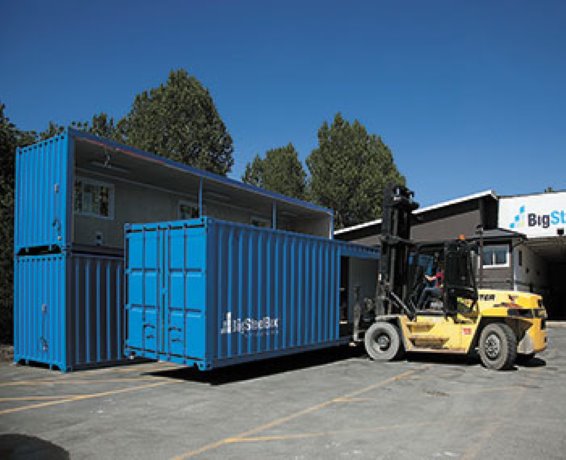B.C.-based BigSteelBox has secured much-desired approval in Alberta.
In December, BigSteelBox Structures was certified under Part 10 of the Alberta Building Code, which addresses Relocatable Industrial Accommodation.
What this means for the Kelowna-headquartered company is that its modular workforce housing can be used in Alberta, and throughout Canada, because BigSteelBox has met the high standards set by the Alberta Building Code.
“It’s the pinnacle,” said Jason Siebenga, BigSteelBox president.
“Part 10 represents the most rigorous construction standards in Canada. It’s over and above every other province for relocatable structures.”
Owing to the growing proliferation of work camps and required facilities to serve Alberta’s oil and gas, forestry and mining industries, the province has ensured that its building code fully addresses the requirements for relocatable living units, often situated in harsh conditions.
It’s unknown how many other out-of-province or out-of-country companies have earned Part 10 certification said Alberta Municipal Affairs spokesperson Heather Kaszuba.
However, she did confirm that BigSteelBox Structures has met the standard.
With the certification, BigSteelBox’s manufacturing facilities in Abbotsford and Sicamous, B.C. will be stepping up production to ship boxes east, said Devon Siebenga, Jason’s brother and president of BigSteelBox Structures, the modular housing arm of the company.
Much like the Alberta-based company ATCO, one of Canada’s first companies to provide on-site modular structures for the construction and resource industries, BigSteelBox began as a family affair.
The company got its start in 1999, under father Barry Siebenga.
He was a commercial landscaper, who had bought a few steel shipping containers for his own use.
Soon, clients were asking to rent one of the big boxes.
In 2003, the company moved from Salmon Arm to Kelowna and by 2005, Barry’s sons Jason, Ryan and Devon had all joined the growing company, initially focussed on storage units, mobile offices and tool cribs.
Today, BigSteelBox has modified the corten, eight-gauge corrugated steel and 11/8” marine grade hardwood boxes to serve a variety of industrial, commercial and residential uses.
They start with a basic, finished 20-foot container, but can be up to 60 feet long and 10 feet wide and can be linked by removing exterior walls, Devon said.
The move into mobile housing units got a boost when BigSteelBox merged with Mission Group Enterprises in 2012.
Mission’s residential construction experience lends itself well to the design of BigSteelBox Structures’ living units, Jason said.
Typical work camp modulars tend to be utilitarian, standardized and sturdy.
“We build living quarters that people want to live in,” Devon said
“We use high-end fittings, finishes, wall coverings, fixtures.”
Calling them their “Bigger Box,” the steel containers are 14 by 28 feet, almost double the size of a traditional shipping container. However, using steel shipping containers comes with challenges.
For living quarters, polyurethane spray-foam insulation is used, acting as a vapour barrier so that condensation doesn’t form inside the walls.
Last spring, BigSteelBox Structures built a remote lab that was shipped to the oilsands near Fort McMurray.
BigSteelBox has also worked closely with retailers such as Home Depot, Wal-Mart and Target, providing on-site storage for retail goods that can’t fit inside the stores or storage and offices for construction companies.
As Target prepared to open stores across Canada last year, BigSteelBox was a presence at many sites in B.C. and Alberta, supplying units while renovations or new builds were underway.
Some competitors are ATCO and the U.S.-based Mobile Mini company, North America’s largest storage company.
In the early days, competition came from entrepreneurs, who sold or rented shipping containers right at the ports, such as Vancouver or Montreal, Jason said.
But, those containers were bare bones, steel boxes, most often used for storage.
Today, BigSteelBox imports its containers from China, where 99 per cent of the world’s supply is manufactured, Jason said.
About three million shipping containers were built world-wide last year, with BigSteelBox importing about 4,000 of those.











Recent Comments
comments for this post are closed